How to Make a Compost Bin
Would you like to find out how to make a compost bin?
Then carry on reading to find out - with easy to follow instructions and step-by-step images.
So lets take a look...
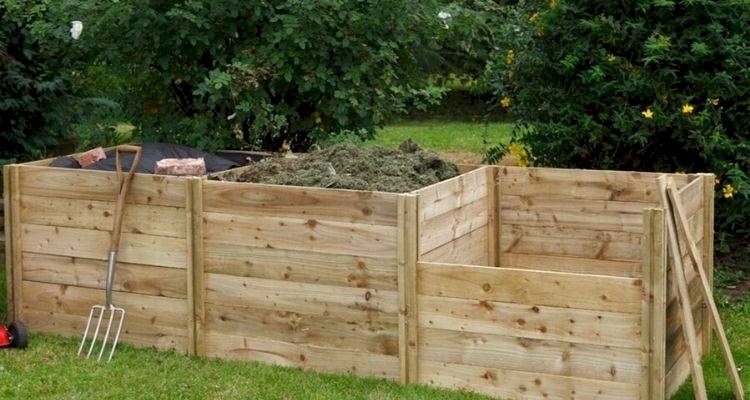
Table of Contents
- What is a Compost Bin?
- What Tools Do I Need to Make a Compost Bin?
- What Safety Equipment Do I Need to Build a Compost Bin?
- What Materials Do I Need to Make a Compost Bin?
- Planning Your Compost Bin
- Preparing to Build a Compost Bin
- How to Make a Compost Bin Yourself
- Types of Compost Bin
- How to Clean a Compost Bin
- FAQs
- Sources
What is a Compost Bin?
A compost bin is a container used for placing organic waste that can be turned into compost over time. Some compost bins are continuous – this means that you can keep adding waste to them.
Other compost bins create batches of compost with a set mix of ingredients that you have to add all at once.
What Tools Do I Need to Make a Compost Bin?
Below is a list of the tools needed to build a DIY compost bin:
- Drill
- Screwdriver
- Saw
- Hammer
- Staple gun
What Safety Equipment Do I Need to Build a Compost Bin?
You won’t need any special safety equipment when making a compost bin. However, you may want to use protective gloves when handling the compost materials.
What Materials Do I Need to Make a Compost Bin?
Here is a list of the materials that you’ll need when building a garden compost bin:
- Organic waste
- Four pallets
- Corner brackets
- Screws
- Hooks
- Latches
- Hinges
- Plate brackets
- Rebar
- Chicken wire
- U-shaped nails
- Staples
Planning Your Compost Bin
Below is a list of things that you should consider when planning to build your compost bin:
Choosing the Right Materials
When choosing the materials to build your compost bin, you want to consider if the materials can transfer anything into the compost. If you are using treated wood to create a wooden compost bin, you want to ensure that the treatment is free from toxic chemicals that may transfer into the compost upon contact.
The same goes for any other materials used. You want to ensure that nothing from the materials can penetrate your compost and ruin.
Where to Put Your Compost Bin
A compost bin is often quite large and unsightly, so you want to think carefully about where to place it in your garden. It shouldn’t really be showcased anywhere in the centre of the garden. You want to try to find a nice spot where it can be tucked away.
It’s important to remember that food waste and such may create a smell, so you want to keep the compost bin away from areas where you may entertain or often sit in the garden, and the smell could ruin the vibe.
Preparing to Build a Compost Bin
When preparing to build your compost bin, you will need to begin by gathering the materials needed for the job. You will need four pallets of equal or almost equal size. Old pallets are widely available, but you need to check that they’re safe to use by looking at the stamp on them.
The stamp should display the IPCC or EPAL logo plus the letters ‘HT’, which indicate the wood has been heat-treated and there’s no risk of toxic materials making their way into your compost. Avoid pallets with the letters ‘MB’ on them as this indicated that they have been treated with the toxic pesticide Methyl Bromide.
How to Make a Compost Bin Yourself
There are several ways in which you can make a compost bin. Below, we have created a step-by-step guide on how to build a pallet compost bin:
Step 1
If your pallets aren’t of equal size, begin by using a saw to cut them down to the same width so that the walls of your compost bin will be at the same height.
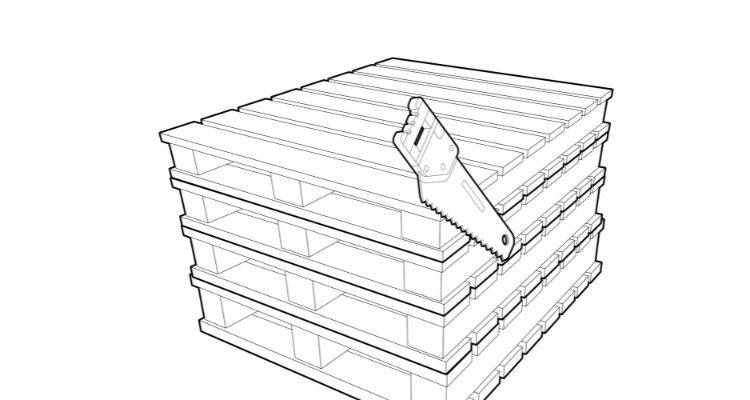
Step 2
Now begin joining three of the pallets together to create the back and sides of the bin. Line them up, lean them against each other and then screw them together to hold them in place. When finished, the two side walls should be flush with the rear wall.
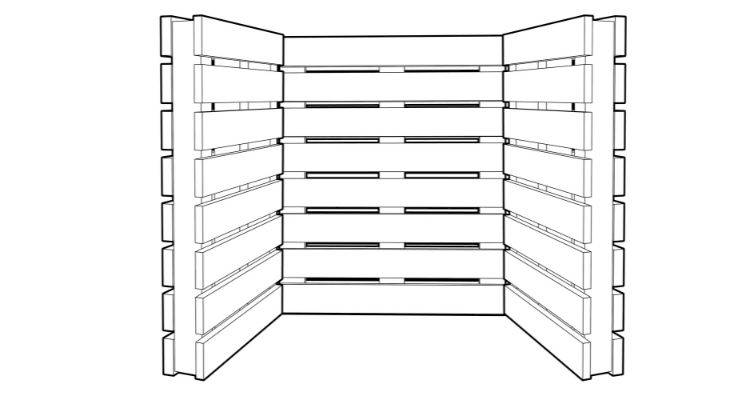
Step 3
Next, fit the corner brackets in each of the corners. You will need to fit two brackets to each corner, one at the top and one at the bottom. These can simply be screwed into place. Use as many screws as necessary to firmly attach them in position.
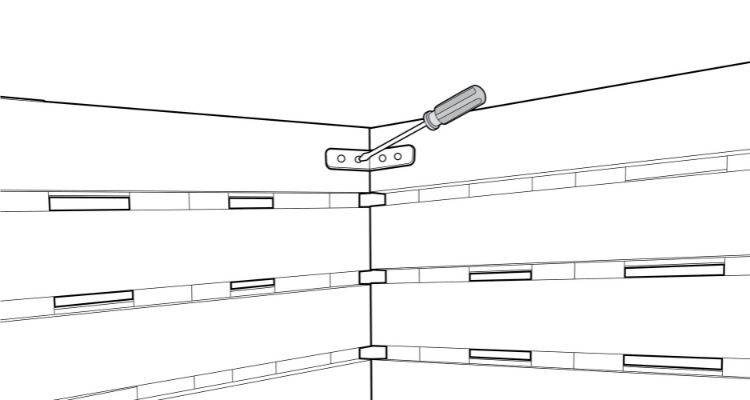
Step 4
The fourth pallet will be used to create doors. Using a saw, cut the pallet into two pieces about halfway up. Saw between the slats, cutting right up against the plank to create an even, tidy finish. Any offcuts can later be used to help level up the walls of the compost bin.
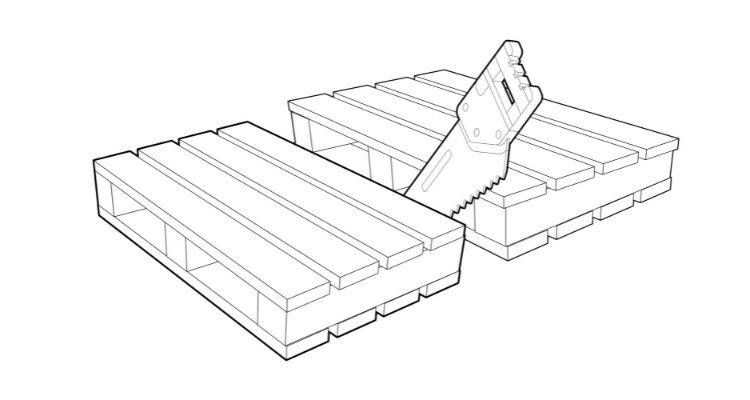
Step 5
Now attach the doors to the walls. Screw two hinges to each door. Attach the hinges on the outside so that the doors can swing open easily. Set the bottom door slightly off the ground to stop it from catching. Similarly, leave a slight gap between the bottom and top doors.
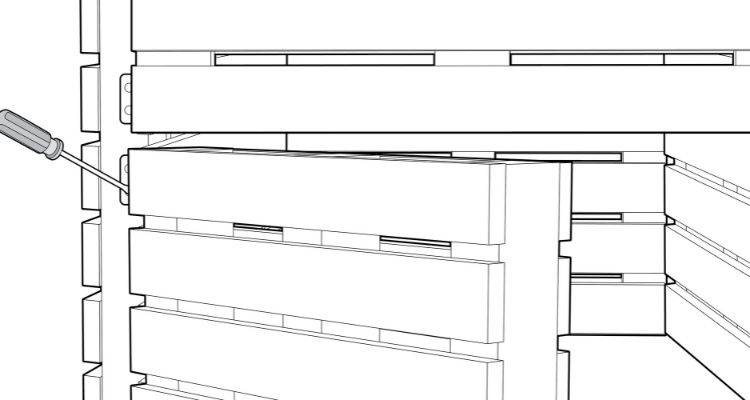
Step 6
Once the doors are in place, you can now install the hook and latches. Screw them into position towards the top of each door.
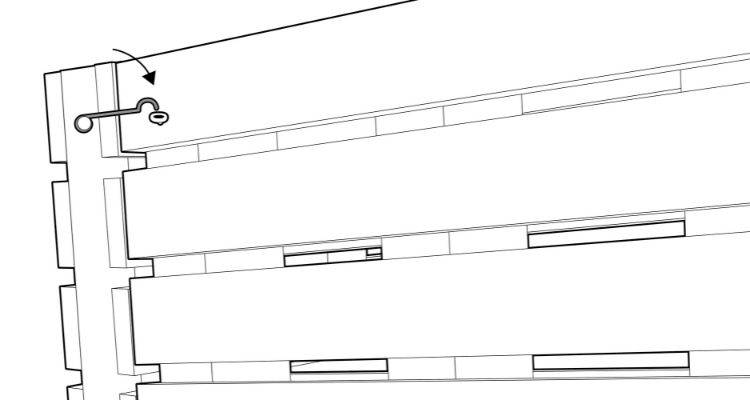
Step 7
If you want to make your compost bin extra sturdy, you can screw in additional plate brackets at the rear corners.
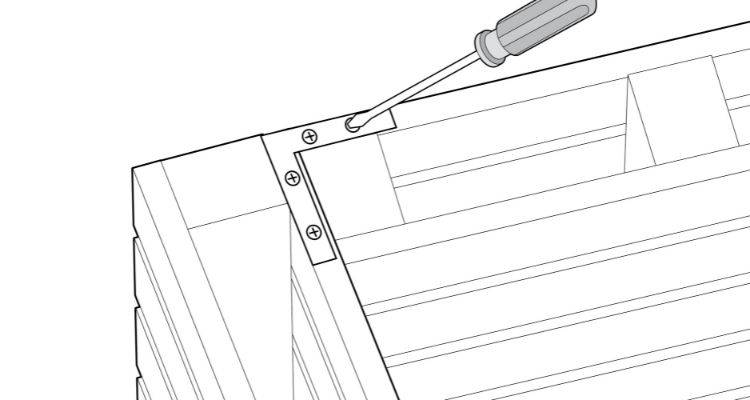
Step 8
The front of the compost bin can be further anchored into place by hammering in lengths of rebar on either side of the wall.
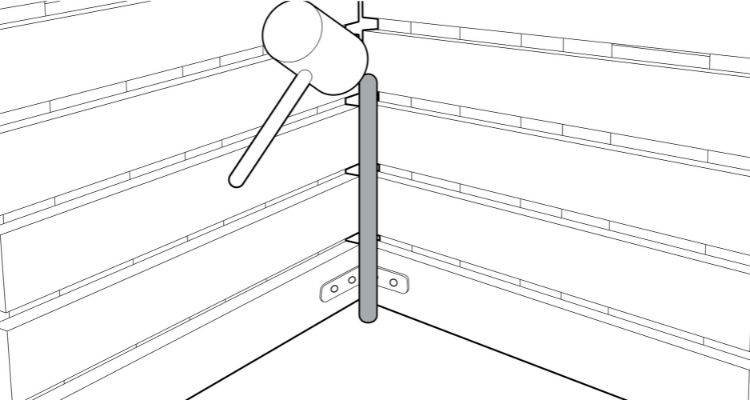
Step 9
Although it isn’t necessary, you may want to then apply a wrap of chicken wire to the outside of the bin to avoid the possibility of any stray contents falling out of the bin. Attach the wire or netting with u-shaped nails or a staple gun.
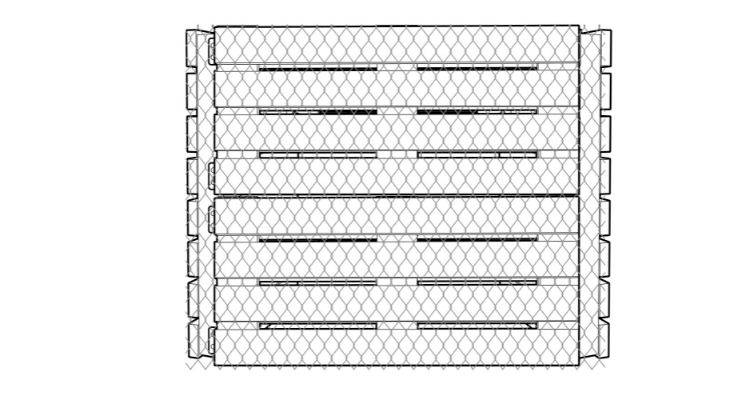
Step 10
Your compost bin is now ready for use. You should start filling the bin with a mixture of browns such as dried leaves and torn cardboard and fresh green materials such as grass clippings and kitchen waste. Try to create a good balance of browns and greens to speed up the composition process.

Types of Compost Bin
Continuous Composters
These composters are an enclosed bin that can handle various materials such as kitchen waste and garden waste. These are called continuous composters are you can continue to add materials to them as time goes on.
The compost in these bins is generated slowly. The finished compost usually filters to the bottom and can be removed a few times each year. These bins are usually sealed with a lid, so this keeps bugs and rodents out of them.
PROS
✔ Easy to use
✔ Not much effort involved
✔ Bugs and rodents are kept out
CONS
✖ The compost is generated slowly
Batch Composters
A compost tumbler allows you to create compost in batches. The tumbling action allows these types of composter to create compost quickly. Each batch will start with several ingredients that are then left for several weeks.
The tumbler needs to be turned daily and constantly checked for efficient moisture. Although this may seem like a lot of effort, this is the fasted way to produce compost at home.
PROS
✔ Efficient composting
CONS
✖ Requires daily work
Kitchen Compost Bin
A kitchen compost bin is one that is placed in the kitchen with the purpose of collecting kitchen waste. It is a very convenient method of collecting kitchen waste ready for composting.
However, it can often create a foul smell – especially if the waste is accumulated over a number of days, weeks, or months.
PROS
✔ Convenient
CONS
✖ Foul smell
How to Clean a Compost Bin
When washing a compost bin, you’ll need to opt for natural cleaners. Instead of using soap that can damage the ecosystem, you should use vinegar, lemon, and baking soda to sanitize the bin and remove any odours.
Use your hose in combination with some of these natural cleaning agents to wash away dirt and keep your compost bin at its very best.
FAQs
What can you put in a compost bin?
- Grass clippings
- Wood shavings
- Tree leaves
- Sawdust
- Vegetable food scraps
- Vegetarian animal manure
- Coffee grounds
- Cardboard
- Black and white newspaper
- Most disease-free garden waste
- Printer paper
Can you make a compost bin using pallets?
What can’t go in a compost bin?
- Diseased garden waste
- Meat
- Fat
- Dairy
- Bones
Can I use compost as mulch?
How often should I turn my tumble-style compost bin?
Once you’ve left it, you should then aim to turn your compost bin several times each day to ensure the compost materials are getting as much oxygen as possible. This will also prevent the compost from drying out around the edges.
Why is my compost bin starting to smell of ammonia?
Ordinarily, it is recommended that you apply an even amount of green and brown waste. However, adding some extra brown waste can help to deter the ammonia smell.
Sources
https://www.youtube.com/watch?v=fW_DVNUt7ms
https://www.gardeners.com/how-to/how-to-choose-a-composter/5082.html
https://www.gardeningknowhow.com/composting/basics/keeping-compost-bins-clean.htm
https://www.gardeningknowhow.com/composting/ingredients/what-can-you-compost.htm
https://awaytogarden.com/12-top-composting-faqs
https://www.recyclenow.com/reduce-waste/composting/making-compost-faqs#6








